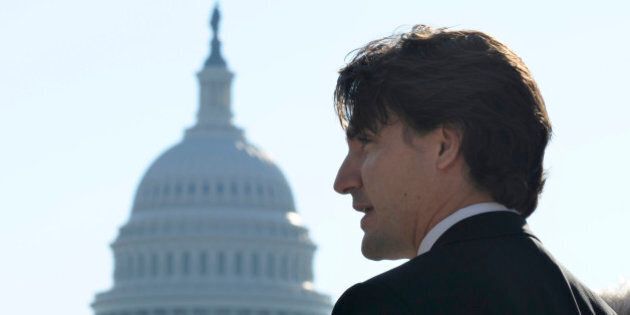
The persistent sluggishness in the global economy and rising inequality in both the United States and Australia requires us to reject the policies of austerity and instead adopt an agenda of inclusive prosperity -- where public investments designed to improve equality also lift growth.
Yet just as the economic arguments for this approach become increasingly clear, the developed world's political debate is increasingly polarised precisely over the choice between austerity-driven stagnation and equality-oriented growth.
This was the underlying economic choice made by the Canadian people in their recent election. Having seen their economy driven back to the brink of recession though the Harper Government's conservative adherence to austerity, they have turned to a Trudeau Government with a very explicit commitment to public spending on measures that will promote inclusive economic growth.
Now the political and economic question is whether the United States and Australia electorates will make a similar choice next year.
Last year, as part of the work of the Center for American Progress, we released a report on Inclusive Prosperity which identified the desperate need for a new approach in our two countries and has spawned a follow up report for Australia. We found that while starting from different positions in terms of wealth and income inequality, both the United States and Australia have common challenges to confront: the twin evils of declining aggregate demand and the squeeze on middle income households.
In both the US and Australia, labour's share of national income has been falling. This means that middle-income households are missing out on a growing share of income growth, squeezing their capacity to purchase services and drive demand. So this slow growth in middle incomes is a major impediment to achieving growth.
As nations consider the policy options available to reverse the squeeze on middle incomes, one option remains abundantly clear -- boosting public investment.
Public investment is attractive as it not only boosts demand but also addresses supply constraints and offers productivity gains.
Only if we solve the problem of a lack of investment we can fix the lack of demand. This is urgent -- and timely. With the currently low cost of capital there is no better time than now to undertake public investment which boosts short-term demand and achieves long-term growth.
An economically progressive public investment agenda in both the US and Australia could include increases in infrastructure investment, human capital investments, greater access to quality child-care -- all measures that boost both aggregate demand and supply.
And yet in both the US and Australia we see conservative politics with an agenda of delivering declining public investment.
The chaotic debates over the Speakership in the US Congress and the Republican presidential nomination suggest no end is in sight to the long rightward march of the Republican Party towards the harsh policies of the Tea Party.
To date they have been held at bay through the sound policies of a Democratic administration which has kept the US economy on a path to recovery, with growth returning and jobs coming with it. This would be hugely vulnerable to a conservative take over of the White House along with the Congress this time next year.
In Australia the story has been quite different.
Having come through the Great Recession -- or Global Financial Crisis as it is know Down Under -- without the devastation felt throughout most of the world, Australia has only recently started been subjected to the politics and economics of austerity.
And while the new Prime Minister, Malcolm Turnbull, is undoubtedly a more moderate face, he is nevertheless proceeding with the former Abbott Government's austerity measures.
This is no exaggeration: in just two years the conservatives have taken an axe to the Australian economy with austerity measures only the Tea Party would be happy with.
Incredibly, unemployment in Australia is now above that of the US.
This is certain economic folly -- yet it seems only determined public argument can change the course.
Both the United States and Australia must avoid going down the path of cuts producing an army of working poor and a crunch on living standards for the middle class, further concentration of wealth and destabilisation of financial markets, and lower and lower economic and employment growth over time.
Next year both the US and Australian publics will have the chance to choose if they will allow ideological prejudice to drive their economies into the ground, or whether they borrow from Canada's lead and invest in a new future.
_______________
Lawrence H. Summers was formerly US Treasury Secretary and is now a Distinguished Senior Fellow at Center for American Progress) and the Hon Wayne Swan MP (formerly Deputy Prime Minister and Treasurer of Australia, now co-chair of the Chifley Research Centre's Inclusive Prosperity Commission).